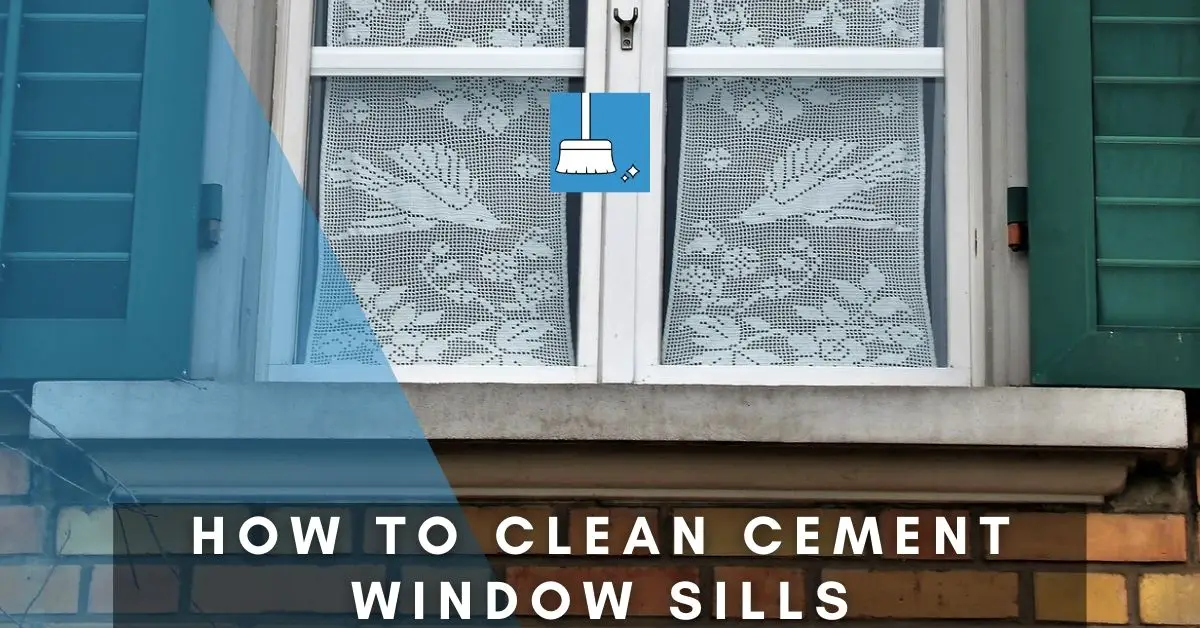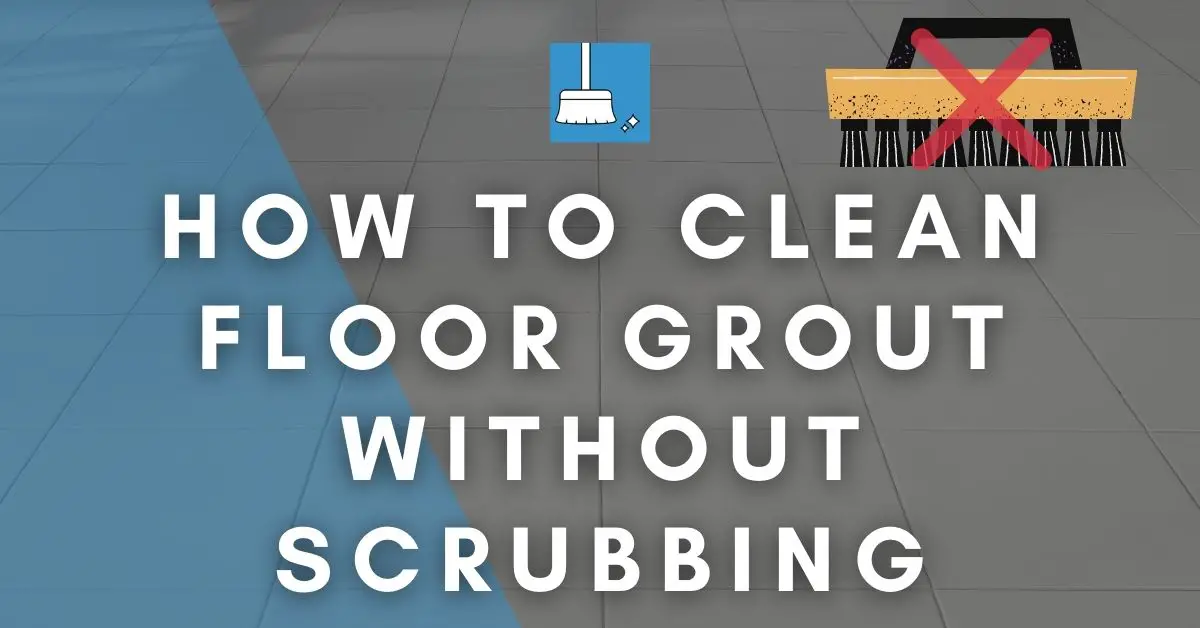Cleaning window sills can also be challenging because these are quite often ignored like many other surfaces of the house and usually receive once-in-a-while spring cleaning. So a lot of dirt and debris gets accumulated around the sill, especially if it has not been cleaned for a long time.
Another challenge that you might be facing is that these window sills are on the upper part of the house, which means you may need to climb around the house or use ladders and this be very risky if you are not a professional.
We’ll see different cleaning methods for cleaning those cement window sills and get rid of the most common types of problems.
Why do I need to Clean Cement Window Sills?
Window sills are an essential part of the window because they help to support the window’s overall structure, they also serve as space where other items can be kept for easy accessibility.
Window sills can be outside or inside the home, depending on the design of the house. There can be a build-up of a lot of ugly-looking stuff on your cement window sills, which includes:
1- Water stains
The white chalky substance you find on cement or cement around pool areas is calcium salts found in hard water. Hard water stains can also be found on cement window sills, especially if you leave excess water on the sill.
2- Chemical Stains
Chemical stains occur due to the chemicals used on the window cement sill, the window, or any other structure close to the window sill.
They are usually unintended, and they may occur when you are cleaning your windows. Some of these chemicals are harmful to cement and can cause further damage
3- Mold
Condensation, water seepage, and leaking windows are prominent causes of mold and mildew growth on cement window sills. The problem occurs more on window sills outside the home than on the sills in the interior part of the house.
Mold is a greenish sticky substance that is found in damp areas.
4- Dust & Debris
Dust and debris can also contribute to the stains on window sills.
How to Clean Cement Window Sills (5 Methods)
Method 1: Bleach Water
Window sills on the exterior part of the house are more exposed to water, and mold can easily begin to grow on the cement if you do not take proper care of your window sills.
Since mold discolors the surface of the sill, one of the effective methods by which you can get rid of them is with bleach water.
Mold rarely occurs on the sills that are in the house; however, bleach can also be used to tackle the problem.
YOU’LL NEED
1- Protective gear (safety glasses, face mask, rubber gloves)
2- Dust brush
3- Bleach
4- Water
5- Hard bristled brush
6- Baking soda
7- Clean rag
STEPS
STEP 1: Before cleaning, ensure you protect yourself by wearing safety glasses, face masks, and rubber gloves to prevent contact with the cleaning agents.
If you are cleaning the window sills in the house, ensure you open all windows to allow the free flow of air.
STEP 2: Remove excess dry dirt by dusting the sill first.
STEP 3: Prepare a mixture of bleach with warm water using one ratio of bleach to 3 ratios of water.
STEP 4: Dip a mildly hard brush in the mixture and scrub the cement sill’s surface to remove all mold stain. Use a clean rag to wipe away the peeled-off mold stains.
STEP 5: Leave the window sill for about five minutes to dry and remove any excess sticky mold.
STEP 6: To get rid of any lingering smell of bleach, you can sprinkle some baking soda on the surface of the cement and leave it for about 10 minutes.
Afterward, dip a clean rag in water and use the rag to wipe down the cement sill.
STEP 7: Leave the sill to air dry.
Alternatively, if you do not want to use bleach, you can use white vinegar and water since they are usually readily available and even cheaper to purchase.
YOU’LL NEED
1- White vinegar
2- Water
3- Spray bottle
4- Brush
5- Microfiber cloth
6- Clean rag
STEPS
STEP 1: mix equal parts of water and white vinegar in a spray bottle.
STEP 2: Spray the mixture on the cement sill, and leave it for about 10 minutes to dissolve the stains on the cement sill.
STEP 3: Use a brush to scrub out the stains from the sill, and then use the microfiber cloth to wipe away the dirt.
STEP 4: Repeat the process until the cement sill is clean.
STEP 5: Rinse afterward with water, dry excess water with a clean rag to prevent water from damaging the cement, and leave the sill to air dry.
Method 2: Vacuum Cleaning and dishwashing liquid or baking Soda
Since mold stains are not the only form of stains that you can find on your cement sill, that means that the cleaning method for a particular kind of stain may differ slightly from another.
You can use this method if the stain on the cement sill is not too pronounced.
YOU’LL NEED
1- Vacuum/Dusting brush
2- Baking soda/ Dish soap
3- Water
4- Spray bottle
5- Brush
6- Microfiber cloth
STEPS
STEP 1: Before you start cleaning, get rid of excess dust or dirt from the window area using a vacuum cleaner or a dusting brush. This step will also remove larger debris particles.
STEP 2: If you are using baking powder, put two tablespoons of baking soda into a spray bottle and fill the bottle with water.
If you are using a dishwashing liquid, put a few drops of the liquid into the spray bottle and fill it with water.
STEP 3: Spray the sill with the mixture and leave it for a few minutes to allow it to penetrate and dissolve the stains on the sill.
STEP 4: After a few minutes, use a brush to scrub the mixture into the sill and remove the weakened stains from the sill.
STEP 5: When the sill is clean, use a microfiber cloth to clean any residue from the mixture.
Method 3: Baking soda and White Vinegar
Baking soda and white vinegar are two of nature’s gifts to humans; not only do they serve as excellent cleaning agents, but they also help to disinfect surfaces and get rid of foul smells.
Mixing baking soda and white vinegar creates a kind of fizzy reaction, and this resulting fizziness is what does the cleaning process.
The downside is that you cannot prepare the mixture before cleaning; the two substances have to be mixed as you are cleaning.
YOU’LL NEED
1- Dusting brush
2- Baking soda
3- Vinegar
4- Clean rag
5- Water
STEPS
STEP 1: After dusting the sill and removing the excess stain, sprinkle some baking soda on the affected surface of the cement sill.
STEP 2: Proceed to add some vinegar to the baking soda on the window sill. It should start to bubble or fizzle; this means the mixture is working.
Alternatively, you can also pour some vinegar on the sill, then add the baking soda next; the result would be the same.
STEP 3: Leave the vinegar and baking soda on the sill for about 10 minutes, after which you can use a brush to scrub the sill to remove stains. If there are any leftover stains, repeat the process and continue cleaning.
STEP 4: When the sill is clean enough, dip a clean rag in water and use it to wipe down the sill, and leave it to air dry.
Method 4: Hydrochloric Acid
Hydrochloric acid is also efficient in cleaning cement window sills. Another alternative to hydrochloric is muriatic acid.
Since this method involves the use of acid, it’s safe to always use rubber gloves and a respirator to avoid contact with your hand and inhalation of toxic gas.
YOU’LL NEED
1- Dusting brush
2- Hydrochloric acid
3- Water
4- Hard brush
STEPS
STEP 1: Clean the surface of the cement to get rid of dirt.
STEP 2: Make a solution of hydrochloric acid and water using one ratio of water to 9 ratios of the acid. Always add the acid to water and not the other way around to prevent chemical accidents.
STEP 3: Sprinkle some water on the window sill to wet the cement.
STEP 4: Use a sprinkler to introduce the initial solution of acid and water to the stained surface of the cement. Work in sections until all the affected area has been cleaned.
STEP 5: Use a brush to spread and brush the mixture on the cement to tackle the stains. After brushing, leave the acid on the cement for about 10 minutes. Rinse the floor with water afterward.
Since hydrochloric acid is a powerful acid, there is likely to be some residue left behind.
To get rid of the residue, prepare a mixture of baking soda and water and sprinkle it on the cement sill and leave it for about 5 minutes to neutralize the acid.
You can rinse the sill afterward with clean water and dry it with a clean cloth.
Method 5: Pressure Washing with any cleaning solution
This technique should only be used when cleaning the window sills on the exterior part of the house because it involves using a lot of water.
The force of the water coming out of the pressure washer is enough to get rid of stains from the sill easily.
YOU’LL NEED
1- Scrub brush
2- Pressure washer
3- Water
STEPS
STEP 1: Prepare any cleaning solution of your choice, or you can also purchase any recommended cleaning product.
STEP 2: Apply this solution to the window sill and allow it to sit on the surface for 10-15 minutes to allow it to dissolve stains.
STEP 3: Use a scrubbing brush to scrub the stains on the surface of the sill. After scrubbing, the solution should form a dirty lather with the stains.
STEP 4: Assemble the pressure washer, and choose the proper pressure and nozzle tip. Use the pressure washer to rinse away the accumulated dirt from scrubbing.
STEP 5: The pressure washer serves two purposes: it rinses away the dirty lather and cleans any residue stains on the sill.
Cement Window Sills – Maintenance

1- Sealing your cement window sill can help extend its lifespan and ensure that it remains useful for a long time.
2- Always perform a timely inspection on the window sills inside and outside the house so that you can easily detect any problems with the sill.
3- If there are cracks in the cement window sill, ensure they are fixed on time to prevent further damage to the sill and the window.
4- Clean the windows regularly and keep the sill free from dust, debris, and excess water. After heavy rainfall, you can use a clean rag to dry excess water.
5- When cleaning, do not use too much water; if you have to use a lot of water, ensure you don’t leave it for too long on the cement sill because water can damage cement.
6- When cleaning the indoor window sills, try to use as little water as possible to prevent water from flooding or damaging the floor (especially wooden), furniture, and other household things that are in the house.
7- Do not overburden window sills with a heavy load.
Conclusion
Cement is a porous material and should be kept well taken care of to avoid stains, cracks, mold growth, and other discoloration issues. Window sills made of cement are no exception.
The methods shown to clean them are tried and tested.





